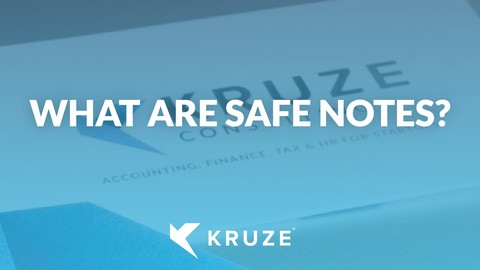
It is incredibly important that startup founders know what their VCs are going for so that they can be aligned and make smart decisions. If you’re developing a financial plan for your startup, Kruze Consulting helps startups with financial modeling, fractional CFO services, due diligence, and more.
Today, we’ll explore the question: what are your VC’s return expectations depending on the stage of investment? The TLDR; seed investors shoot for a 100x return; Series A investors need an investment to return 10x to 15x and later stage investors aim for 3x to 5x multiple of money. This translates into portfolio returns from 20% to 35% targeted IRRs.
Before we get into how these return expectations vary by stage, and how that impacts your startups’ valuation, let’s dig into an important part of how VCs construct their portfolios:
VC Returns - Understanding the Power Law
It is really important to think about venture capital in the sense that the power law is really at work in venture capital investing. They do big portfolios of startups and 20 to 100 investments in a given venture capital fund. So they know that two or three are going to power most of the returns of the entire portfolio because in the startup world the power law is, the big ones win big. Think about Uber, Facebook, Google. Those types of companies return their fund. The fund returns with 10X or 15X all because of, or mostly because of that one investment.
So that is the power law at work.
Now also remember, we are in a super hot market right now. I’m recording this in early 2021, and this is one of the hottest markets I’ve ever seen in my career. It’s reminding me of 1999; there’s IPOs every other day. There’s SPAC IPOs. There’s a lot of companies getting bought.
It is a great time to have been a venture capitalist and been investing five to 10 years ago. That portfolio of startups that you invested in as a VC are maturing at the perfect time.
Many of them are getting public and providing liquidity to both the VCs. Yet, more importantly, there are the limited partners, the funds, the endowments, the foundations, the high net worth people, the family offices that invested in the venture capital funds.
The cool thing about that is those groups tend to recycle that capital back into the venture capital ecosystem and commit to new funds. However, there are rough times and years where there are few to no IPOs. So, good times, like the current, have to feed everyone in the industry so that we can all survive the bad times. Just know we’re in a special moment right here.
UPDATE ON VC RETURN EXPECTATIONS IN APRIL 2024
Throughout 2023, the VC market declined significantly from the high investment levels of 2022. In addition, deal volume has dropped significantly, reaching its lowest level in a decade. Mega-rounds (financing rounds of $100 million or more) are lower than they’ve been since 2017. So startups are competing for financing in 2024, and VCs are spending more time to get to know founders and their plans. That carries over to due diligence, which is more thorough and detailed than during the 2022 investment cycle. Founders need to manage capital carefully, and focus on building profitable, resilient companies to attract investment.
When pitching, founders should emphasize their business fundamentals, including demonstrating solid gross margins and good customer acquisition costs, controlling burn rates, and managing tight resources. That’s going to put you in the best position to attract investors.
The good news is, the slower pace of investment also means there’s a lot of committed but unallocated capital (dry powder) available. And as everyone knows, when there’s a lot of supply, it puts downward pressure on prices – which, in this case, are the returns that VC investors are looking for. The nature of startup investment means that, with every fund, a few successes earn the returns the fund needs, but with a lot of capital in the ecosystem, VCs may be willing to accept lower return expectations for startups in their portfolios.
Minor Update on VC Return Expectations in May 2022
In 2022 - it’s no longer a hot market for VC funding! But does this mean that VC return expectations have changed?
Overall, no. VCs still hope to get the same overall portfolio returns that they were previously targeting. However, it can be a LOT harder for them to hit these returns given the market downturn. What we will likely see as a result of the market downturn is that VCs with dry powder to invest will slow their investment pace in the middle of 2022.
And so sometimes the return expectations also change depending on if you’re in a good time or bad time. OK, now that we have some background information, let’s dive into the question at hand, “what are your VC’s return expectations depending on the stage they invested in your startup?”
Venture Capital Return Expectations by Stage of Investment
Seed Investors
Seed investors typically have a lot of companies they invest in because it is so hard to pick the winner at the seed stage. They just have very, very low information. Oftentimes they’re investing in the people, the PowerPoint concept, and maybe an MVP, a minimum viable product or demo product, right?
So seed fund investors will do anywhere from 20 to 50 to 60 investments, depending on their fund size. They are targeting a 100X return pretty much for every company. They want every company to be 100X. However, the problem at seed is there’s a high failure rate relative to the other stages of venture capital.
Oftentimes it’s only two or three companies that are providing all the return and all the capital back to investors in the seed stage funds. Yet, when they are signing that check and sending you that wire, they are thinking about a 100X return. Can this be a 100X company? If they’re investing at a $5 million valuation or $10 million valuations, can this be a billion or multi-billion dollar company?
They also have to factor in all the dilution they and the company will take over the years as it goes through different funding rounds. So 100X rule of thumb for seed. They know they’re not going to get it on all the deals or even most of the deals. They know they’re going to get it on hopefully one, two, or three of the deals in their portfolio.
Series A Investors
Series A investors are writing bigger checks especially than they used to. They have a little bit more information. A lot of times, Series A investors are investing on more than a concept and can either see a million dollars or $2 million of revenue. They’re usually investing in an actual product at work.
Also worth noting, in life sciences, maybe there’s more clinical data or there’s an FDA approval or something like that but they are investing in bigger dollar amounts in startups than the seed stage fund. Whereas, the seed-stage fund might invest anywhere from $500K to $3 million in a specific company, Series A investors are investing five, 10, $15 million, even $20 million sometimes these days because again everything’s hot. They are looking for something like a 10 to 15X on their investments.
They know just like the seed investors that they’re not going to get it on all the deals but they are expecting to have a significantly lower loss rate than the seed funds. Because again, they just have more information.
Late-Stage Investors
Now late-stage investors typically target something like a 3 to 5X return. Although, the catch is that they’re very close to the M&A exit and IPO in the whole timeline. As a seed investor, it’s probably going to take five to 10 years series A. Maybe it’s three to eight years for your company to do an IPO or get bought. For institutional late-stage investors it’s one to three years. When they start getting a 3 to 5X return in that very short timeframe, their IRR and internal rate of return looks good.
Also, they have even more information than the series A, series B investors. So they should have an even lower loss rate.
Now the catch for them is that they’re investing much bigger dollar amounts. A late-stage round can be a hundred million, 200 million or even bigger. So when they take a loss, it is very, very painful for them; but they are investing out of bigger funds and they will still be diversified.
So just know that the late-stage round you’re raising right now, everyone’s doing the back of the envelope math and wondering, can this company do a 3X to 5X in the next 18 months and get public?
If that company can, it is a fantastic investment for late-stage investors and they will be all over you and you’ll have a lot of term sheets.
VC Returns are Based on the Portfolio’s Performance
Remember, VCs are judged by their investors on the overall fund portfolio performance. That means that any individual company in the VC’s portfolio can fail, yet the fund can be a high-performing fund if enough other startups produce returns.
So I hope this helps you know what your venture capitalists are expecting out of your company and the return horizons. If you are looking to, or are in the process of raising venture capital, and have any questions or need help, please feel free to reach out. You may also like our list of the top VC pitch decks. Our clients have raised over $10 billion in venture and seed financing, and our team knows how to navigate the VC diligence process.









